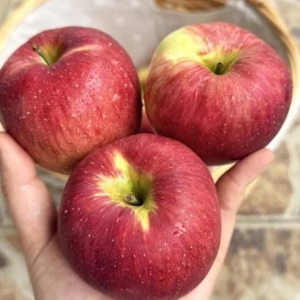Purslane (Portulaca oleracea), often seen as a simple garden weed, is actually a nutritional powerhouse packed with health benefits and culinary versatility. With its slightly tangy, salty, and refreshing taste, purslane can rival meat in terms of nutrition, flavor, and health advantages. If you’re not already growing this superfood in your garden, here are 7 reasons why you should start now!

For illustrative purposes only.
-
2.Packed with Essential Vitamins and Minerals
Purslane is loaded with vitamins A, C, and E, along with minerals like magnesium, calcium, potassium, and iron.
Vitamin A supports eye health and immune function.
Vitamin C boosts the immune system and fights oxidative stress.
Magnesium and potassium regulate blood pressure and promote muscle health.
Compared to many vegetables, purslane contains higher levels of essential nutrients per serving. - A Nutritional Powerhouse – Higher Omega-3 Than Meat
Purslane is one of the richest plant sources of Omega-3 fatty acids, surpassing even some types of fish and meats.
Omega-3 help reduce inflammation, support heart health, and improve brain function.
This makes purslane an excellent alternative for vegetarians and vegans looking to boost their intake of healthy fats.

For illustrative purposes only.
- Supports Heart Health
Due to its high Omega-3 content, purslane helps lower bad cholesterol (LDL) while increasing good cholesterol (HDL).
Its potassium content regulates blood pressure, reducing the risk of heart disease.
Antioxidants in purslane prevent oxidative stress that leads to cardiovascular problems.
How to use it: Add purslane to salads, smoothies, or soups to promote heart health naturally. - Great for Weight Loss and Digestion
Purslane is low in calories but high in fiber, making it a perfect food for weight management.
It helps you feel full longer, reducing unnecessary cravings.
Its mucilaginous texture supports digestive health by promoting gut-friendly bacteria.
How to use it: Add it to green smoothies, stir-fries, or light summer dishes for a low-calorie, high-nutrient meal.

For illustrative purposes only.
- A Natural Antioxidant Booster
Purslane is rich in antioxidants like beta-carotene, glutathione, and melatonin.
These antioxidants protect against premature aging, inflammation, and chronic diseases.
It also contains betalains, which are compounds known for their powerful anti-inflammatory effects.
How to use it: Enjoy fresh purslane in raw salads to maximize its antioxidant benefits. - Drought-Resistant and Easy to Grow
Purslane is one of the easiest plants to cultivate, thriving in poor soil and requiring minimal water.
It’s drought-resistant, making it a sustainable choice for home gardens.
Once planted, it grows quickly and abundantly, providing a continuous supply of nutritious greens.
Gardening Tip: You can grow purslane from seeds or cuttings, and it flourishes even in containers, raised beds, or garden borders.

For illustrative purposes only.
- Delicious and Versatile in the Kitchen
Unlike many leafy greens, purslane has a pleasantly crunchy texture and a mild, lemony, slightly salty flavor.
Raw Consumption
Salads: The simplest way to enjoy purslane is by adding it raw to salads. Its crunchy texture and lemony flavor enhance the taste and nutritional profile of any salad.
Smoothies and Juices: For a quick nutritional boost, blend purslane leaves into smoothies or juice them. This method preserves the omega-3 fatty acids and vitamins, delivering them in a convenient and digestible form.

For illustrative purposes only.
Sautéed Greens: Purslane can be sautéed with garlic and olive oil for a simple side dish that pairs well with both meat and vegetarian main courses.
Soups and Stews: Adding purslane to soups and stews not only thickens them naturally but also infuses the dish with its health-promoting compounds.
Innovative Uses
Pesto: Replace some or all of the basil in traditional pesto recipes with purslane for a nutrient-dense version of this beloved sauce.
Pickles: Purslane’s succulent stems and leaves can be pickled, creating a tangy and healthy condiment that can be added to a variety of dishes.

For illustrative purposes only.
Purslane is not just a weed—it’s a superfood packed with flavor, nutrients, and health benefits. Whether you’re looking to boost your heart health, improve digestion, or add more plant-based nutrients to your diet, this underrated green is a must-have in your garden.




